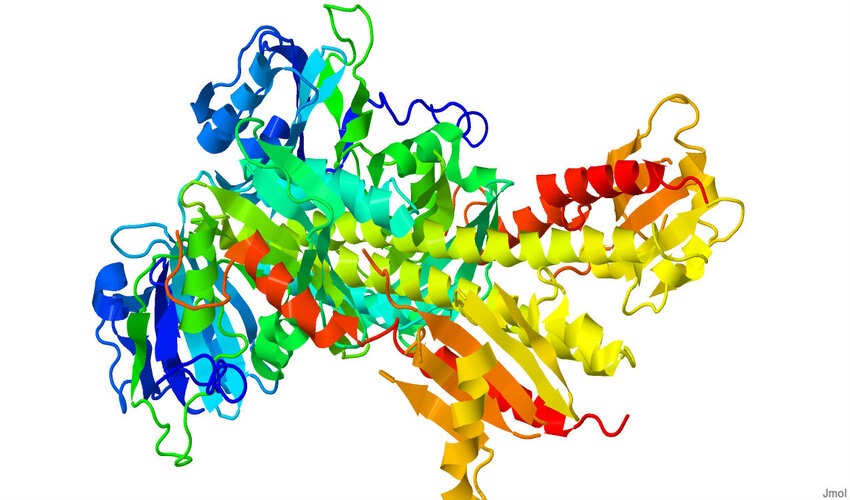
Introduction:
Phytochrome B (phyB) is an essential photoreceptor protein determined in flowers that plays a pivotal role in light notion and signaling. It is accountable for mediating numerous physiological responses, which include seed germination, seedling development, photomorphogenesis, and photoperiodic law.
Information about the molecular mechanisms and signaling pathways of phyB is crucial for unraveling the problematic strategies by using which flora perceive and reply to light cues. This text aims to delve into the problematic workings of phyB, exploring its shape, activation, and downstream signaling events.
Shape of Phytochrome B:
Phytochrome B phyb belongs to the phytochrome family of photoreceptor proteins, characterized by their capability to take in pink and always-purple mild. It is composed of major domain names: the N-terminal photosensory domain and the C-terminal output domain.
The photosensory area includes a chromophore-binding pocket, wherein the light-soaking up bilin chromophore is bound. The output area, then again, is responsible for transmitting the light signal to downstream signaling additives.
Activation of Phytochrome B:
Upon absorption of purple mild, phyB undergoes a conformational trade, changing from its inactive Pr (crimson-mild absorbing) shape to its lively Pfr (some distance-pink mild absorbing) form.
This conversion triggers a cascade of events, mainly to the activation of downstream signaling pathways. The exact mechanism of this conformational alternate is still below research, however it entails changes in the interactions between the chromophore and surrounding amino acids.
Downstream Signaling Pathways:
As soon as activated, phyB initiates a complex signaling community that regulates various factors of plant boom and development. One of the key downstream signaling additives is the phytochrome-interacting component (PIF) family of transcription elements.
Within the absence of energetic phyB, PIFs accumulate inside the nucleus and promote the expression of genes involved in elongation and skotomorphogenesis (increase in darkness). But, upon phyB activation, PIFs are hastily degraded or sequestered within the cytoplasm, leading to a transfer from skotomorphogenesis to photomorphogenesis (growth in mild).
PhyB-mediated signaling also includes the modulation of other signaling molecules, which includes hormones and 2nd messengers. As an instance, phyB has been shown to have interaction with auxin, gibberellins, and brassinosteroids, influencing their biosynthesis and signaling pathways.
Moreover, phyB can alter the tiers of 2nd messengers like calcium ions and reactive oxygen species (ROS), which act as signaling molecules in diverse physiological strategies.
Moreover, phyB signaling intersects with the circadian clock, allowing plant life to respond to light cues in a time-based manner. PhyB interacts with clock-associated proteins, which include the night complex, to alter the expression of clock genes and hold proper circadian rhythms.
Law of Phytochrome B hobby:
The activity of phyB is tightly regulated to ensure proper mild belief and signaling. several elements make a contribution to the modulation of phyB pastime, such as light fine, intensity, and length. crimson light turns on phyB, at the same time as far-pink light reverses its activation, converting it again to the inactive Pr shape.
This reversible photoconversion permits flowers to feel the ratio of red to a long way-purple mild, which offers essential data approximately their light environment.
Furthermore, the abundance and stability of phyB are regulated by using diverse put-up-translational modifications, including phosphorylation, ubiquitination, and sumoylation. These changes affect phyB’s stability, subcellular localization, and interaction with other signaling additives, in the long run influencing its activity.
Read more about cytokinesis in organisms.
Conclusion:
Phytochrome B is a critical photoreceptor protein that plays a crucial position in light perception and signaling in flowers. Through its problematic molecular mechanisms and signaling pathways, phyB regulates various physiological processes, which include seed germination, seedling improvement, photomorphogenesis, and photoperiodic responses.
The structure of phyB, its activation with the aid of light, and next downstream signaling occasions were the situation of tremendous studies. knowledge these mechanisms affords precious insights into how vegetation understand and respond to light cues, that may have massive implications for crop improvement, horticulture, and sustainable agriculture.
Similarly research continues to be needed to completely elucidate the complexities of phyB signaling, along with the identification of extra signaling additives and the proper mechanisms underlying phyB-mediated responses.
Despite the fact that, the expertise won thus far has paved the manner for centered tactics to govern phyB interest and decorate plant boom, strain tolerance, and yield in numerous agricultural settings. persevered exploration of phyB signaling promises to resolve new avenues for harnessing the power of light in optimizing plant productiveness and making sure international food protection.
You may also read about mouth larva infestations in human.

Aimee Garcia is a Marketing Consultant and Technical Writer at DailyTechTime. She has 5+ years of experience in Digital Marketing. She has worked with different IT companies.

